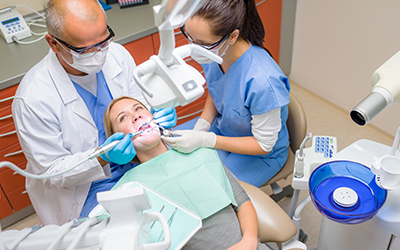Image Credit:
File ID 26766479 | © Candybox Images | Dreamstime.com

A bone graft is a common procedure in dentistry used to augment and strengthen the jawbone, enabling successful tooth implantation or periodontal disease treatment. This blog will explore the purpose, procedure, and potential risks associated with bone grafts in dental treatments.
Bone grafts are primarily performed to address two key issues - insufficient bone structure for dental implants and bone loss due to periodontal disease. A bone graft can create a stable foundation for tooth replacement and restore oral health in both cases.
During the bone graft procedure, a dental professional or oral surgeon carefully places bone graft material in the targeted area of the jawbone. The graft material can be synthetic, sourced from animals, or derived from the patient's bone (autograft). Over time, the graft material fuses with the existing bone, promoting new bone growth. This process, known as osseointegration, increases bone density, providing a robust support structure for dental implants.
For successful tooth implantation, a healthy and sturdy jawbone is essential. If a patient has experienced bone resorption due to tooth loss or other factors, a bone graft may be necessary to rebuild the bone and create a secure base for the implant.
In cases of advanced periodontal disease, the supporting bone around the teeth can deteriorate, leading to tooth loss. Bone grafts can be employed in periodontal treatments to regenerate lost bone and save the affected teeth.
While bone grafts are generally safe and well-tolerated, as with any surgical procedure, there are some potential risks. These may include infection, bleeding, allergic reactions to the graft material, and graft failure. However, the risk of complications is significantly minimized when performed by a skilled and experienced dental professional.
In conclusion, bone grafts are crucial in restoring oral health and facilitating successful tooth implants. Whether used in tooth implant procedures or periodontal disease treatment, bone grafts offer a reliable solution for patients with compromised jawbone structures. If you require dental implantation or have concerns about periodontal disease, consult a qualified dental professional like Coastal Periodontics to determine if a bone graft is the right option. With proper care and expertise, a bone graft can pave the way for a healthier, more confident smile.